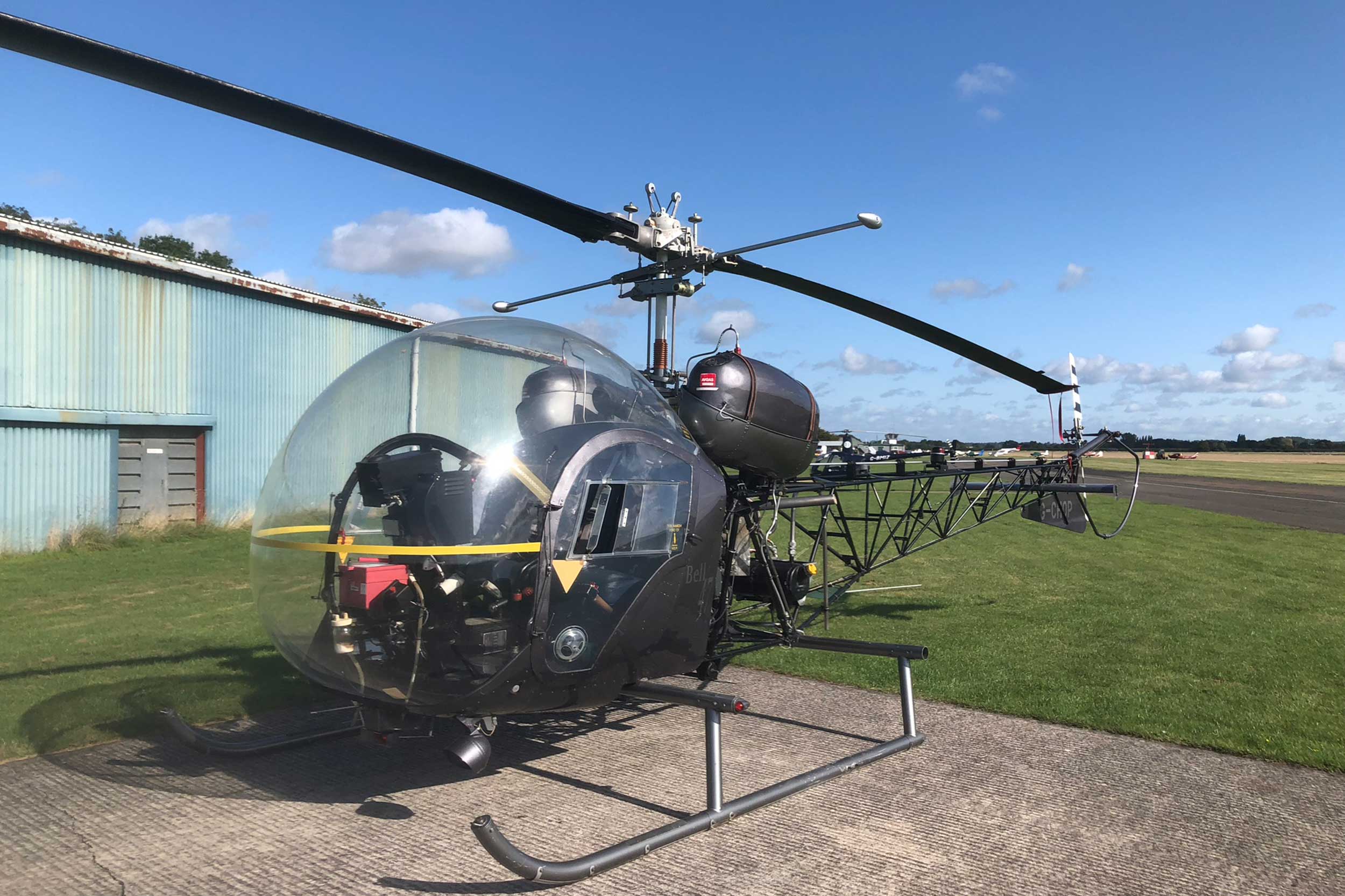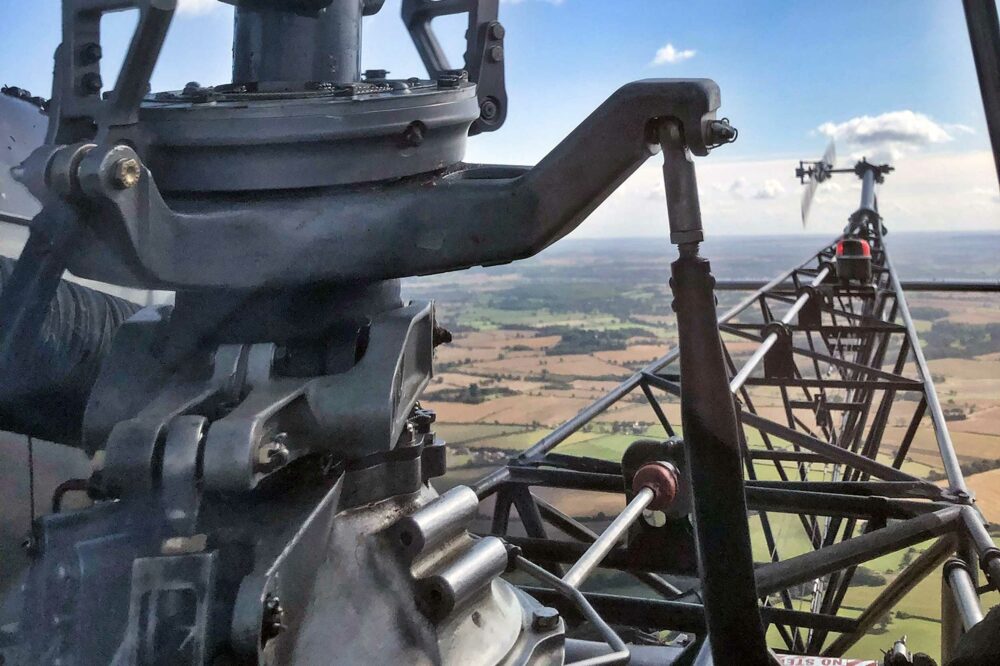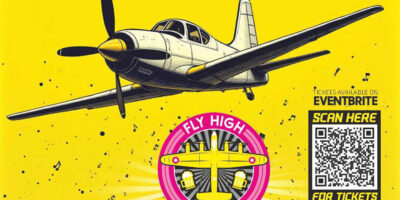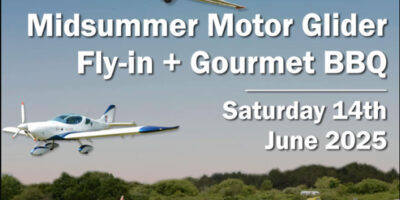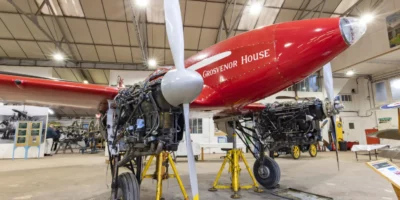It’s this one that I had the privilege of flying with my original helicopter instructor, Matt. In our pre-flight briefing he showed me an original Bell 47 flight manual – not from this specific machine, but still a fascinating thing to see.
Out in the hangar, I discovered that the Check A is easy to conduct when everything’s so exposed, but one thing you do need to be careful of is the grease. It’s absolutely covered in it – something I would later learn, courtesy of the Scout and Wasp, is generally a thing with vintage helicopters.
Having previously only flown Robinsons, the fuel tank set-up on the Bell 47 came as a bit of a surprise. Instead of fuel gauges, you rely on a visual inspection of the tanks’ contents, noting which hole the fuel comes up to on a metal plate inside. I loved the quaintly worded label on the outside entreating you to “replenish both tanks”.
Getting the Bell 47 out of the hangar was something more of a challenge and required considerable man-and-woman power: two of us pushing strenuously on the skids and another on the tail rotor guard. This labour complete, it was time to climb aboard.
The seating arrangements are worthy of note, firstly because, unlike in most helicopters, the pilot sits on the left, and secondly because it actually seats three abreast. I’d venture to say that it wouldn’t be a very comfortable ride for the person in the middle should there be an instructor in the right-hand seat, however, as the collective would need to be raised between their legs!
I don’t remember too much about the engine start, so I can only assume it was uneventful, but I do recall the feeling of trepidation I had when Matt got me flying the Bell 47 right from the word go. This was my first time flying a helicopter with manual throttle control, and it seemed to be putting a lot of confidence in me to entrust me to do the take-off right next to the hangar!
For non-heli pilots, I should explain the whole ‘manual throttle control’ thing. These days, helicopters automatically open and close the throttle when you raise and lower the collective. This lightens your load, as it means you only really have three controls to operate, although in most helicopters you can also adjust the throttle manually if certain circumstances require you to.
With older helicopters like the Bell 47, though, you have to manually open and close the throttle on the end of the collective to apply or reduce power, meaning you’re juggling no fewer than four controls. Not easy – especially when you have the added problem that your arms aren’t quite long enough to reach the cyclic without fully stretching them out (must bring a cushion next time!).
After a perfectly passable first take-off, we climbed out of the circuit and had a go at some general handling. Though slow, it was nicely stable, and it was an enjoyable ‘back to basics’ experience. I found myself flying more instinctively in response to the engine sound rather than referring much to the instruments, although, being used for training, this one does have a few comparatively modern ones retrofitted.



